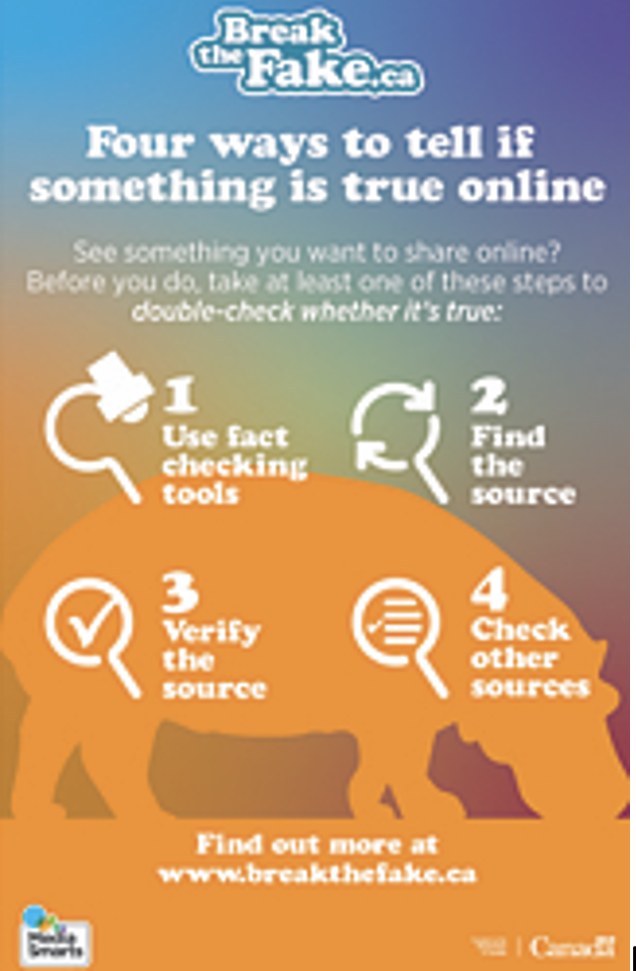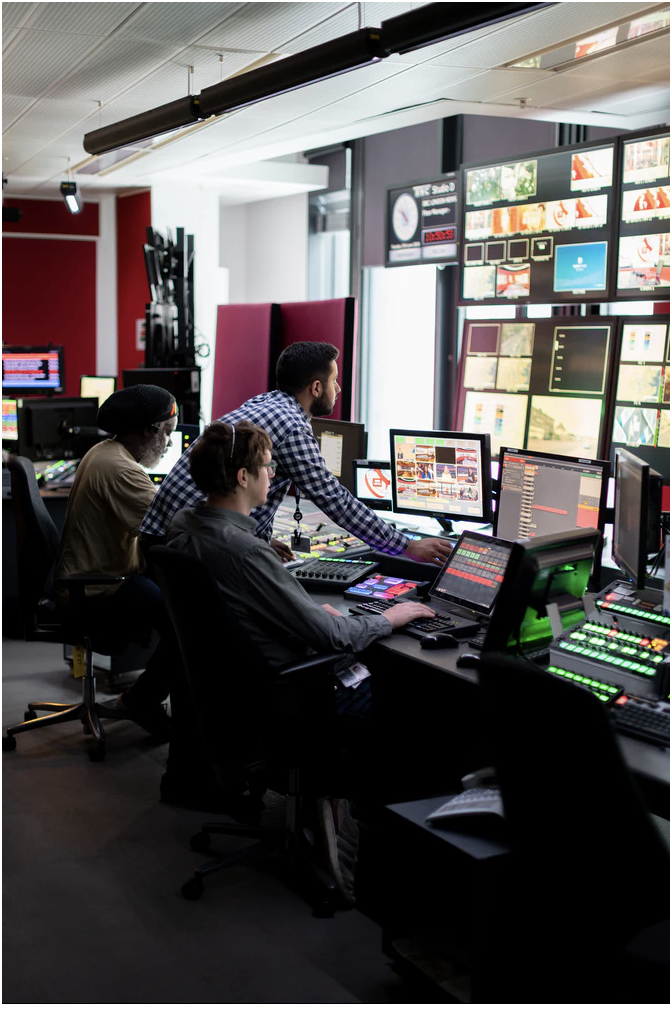Lend me your ears – Here is my advice on teaching students’ digital citizenship
From steam powered cars to Tesla’s, from the first ENIAC machine to laptops, from rotary phones to iPhones, technology is continuing to progress at a rapid rate. In the 21st century, there is no denying that students are going to be surrounded by technology and required to utilize it at some point. As a result, we must take into consideration, “…how best to prepare young people for the technological, social, cultural and political changes they face in a world that is increasingly characterised by local diversity and global connectedness.” (O’Rourke, 2005). This includes teaching individuals how to be digitally literate and teaching them digital citizenship. I believe there are four main areas to teaching students these life skills: Teaching them how to (a) “Actively read, reflect on and analyze texts (multimodal-visual, audio etc.) to uncover underlying meanings…” (Manning-Lewis, 2021), (b) protect themselves and their information online, (c) communicate and collaborate respectfully, and (d) balance their physical and digital lives.

The first thing that I think is important is to help students understand how to find credible sources and how to actively read and understand them. A study put out by Stanford stated that out of 7,804 individuals that were surveyed, “82% were unable to tell an ad marked as “sponsored content” apart from a real news story, and many said they judged the credibility of news based on how much detail was given or whether a large photo had been included, rather than on the source.” (Stenger, 2017). This statistic is quite scary when you think about all the fake news that is put out on the internet. My advice is to incorporate lesson(s) with your students explaining basic tips such as looking for quotes, going directly to the source, checking the date of an article, checking for source objectivity, and using a variety of sources, such as talking to experts, to ensure your information is correct. Simple lessons and practice with aspects like this can help ensure that students know how to sift through information and find credible sources. There are many programs and resources online that you can use to teach these skills such as Common Sense Education and MediaSmarts.

Next, I think it is extremely important to teach students how to protect themselves and their information online. From cyberbullying, to predators, to privacy issuess, there are countless concerns when it comes to protecting ourselves online. Research shows that, “82% of cyber stalkers use social media to find out information about their victims.” (SearchRPM, 2019). Threats like this stress how much we need to teach individuals how to be safe online, especially since we are beginning to use technology at much younger ages. Some tips for online safety include monitoring individuals while they are using technology, installing antivirus software, using kid friendly search engines, using parental controls, and talking to children about online safety (GCFGlobal.org, n.d.). One idea that I have taken from one of my mentor teachers was a lesson done on digital safety where she talked about what information is personal/unsafe to share and what information is ok to share. She did a little lesson with them explaining what type of information we should not share online and then had a game where each student got a piece of paper with some sort of information on it (ie: “my address is….” Or “my favourite book is…”) and then they worked together as a group to decide if belonged under the personal/unsafe heading or safe heading. This was really effective for the young students and got them thinking about which information they should not be sharing online.
Another important aspect concerning the internet is teaching individuals to be respectful while online. According to SearchRPM, “90% of children have seen cyber bullying in the last year.” (2019). This number is extremely high and according to Andrea Dudley, cyberbullying can cause a plethora of problems including low self-esteem, dropping grades, depression, stress that causes headaches, stomach pain, nausea etc., suicidal thoughts, and more (2020). This is just touching the surface of the negative impacts that come from cyberbullying. So how can we prevent this? First, you can work with students to develop their social emotional learning. “SEL is the process through which children and adults understand and manage emotions, set and achieve positive goals, feel and show empathy for others, establish and maintain positive relationships, and make responsible decisions.” (Prodigy, 2021). I have included a link to a website that talks in depth about SEL. In addition to this, it is important to talk about digital citizenship with students before giving them access to technology. You may consider creating some sort of contract that the kids must sign or creating a visual poster, as a class, that has a list of the rules. Finally, ensuring that students know and understand that bullying will not be tolerated is very important.
My last piece of advice is to talk to individuals about creating a healthy balance between their digital and physical lives. Studies have shown that, “On average, children ages 8-12 in the United States spend 4-6 hours a day watching or using screens, and teens spend up to 9 hours.” (American Academy of Child and Adolescent Psychiatry, 2020). It has also been shown that too much screen time can cause issues such as sleep problems, lower grades, distancing oneself from family and friends, lack of outdoor time or physical activity, weight and mood problems, body image issues, and more (American Academy of Child and Adolescent Psychiatry, 2020). As a result, it is important that we talk to children about finding a healthy balance for their screen usage. One idea to get them thinking about this is to get individuals to track their screen time so they can see how much time they really spend online. After they have tangible data that shows them how much time they really spend online, explain to them the importance of being offline and being present. Get them thinking about how getting outside, reading a book, or hanging out with friends benefits them, and how spending countless hours in front of the screen can be harmful to them. Lastly, try and encourage and model a healthy balance in the classroom and at home. At school, encourage students to be active during free times and encourage creativity in class when possible. At home, set rules and follow them yourself. Lead by example by going out for a walk or reading the newspaper instead of watching the news for an hour every evening.
To end this blog off, I thought I would leave you with this fun and informative song you may want to share with your own students one day. It covers all the main points I discussed in the past few paragraphs. I hope you enjoy!
Resources
American Academy of Child and Adolescent Psychiatry. (2020, February). Screen Time and Children. https://www.aacap.org/AACAP/Families_and_Youth/Facts_for_Families/FFF-Guide/Children-And-Watching-TV-054.aspx.
Common Sense Education. (2021, February 23). Digital Citizenship Curriculum. https://www.commonsense.org/education/digital-citizenship/curriculum?topic=news–media-literacy.
Common Sense Education. (2019, August 8). We The Digital Citizens. [Video file]. Retrieved from https://www.youtube.com/watch?v=-N7lRYMmbXU
Dudley, A. (2020, October 26). Effects of Cyberbullying On An Individual. CyberWise. https://www.cyberwise.org/post/effects-of-cyberbullying-on-an-individual.
GCFGlobal.org. (n.d.). Internet Safety for Kids: Teaching Kids About Internet Safety. https://edu.gcfglobal.org/en/internetsafetyforkids/teaching-kids-about-internet-safety/1/.
Manning-Lewis, T. (2021, July 16). Literacy in a Digital Age [PowerPoint]. https://bright.uvic.ca/d2l/le/content/128692/viewContent/1170805/View
MediaSmarts. (n.d.). https://mediasmarts.ca/.
O’Rourke, M. (2005). Multiliteracies for 21st Century Schools (Ser. 2). The Australian National Schools Network Ltd.
Prodigy. (2021, April 19). 25 Social Emotional Learning Activities & How They Promote Student Well-Being. Prodigy Education. https://www.prodigygame.com/main-en/blog/social-emotional-learning-activities/.
SearchRPM. (2019). Internet Safety for Kids. https://www.searchrpm.com/internet-safety-for-kids
Stenger, M. (2017, March 6). 8 Ways to Hone Your Fact-Checking Skills. informED. https://www.opencolleges.edu.au/informed/features/8-ways-to-hone-your-fact-checking-skills/.
**Please note WordPress does not allow you to do hanging indents for APA formatting**




